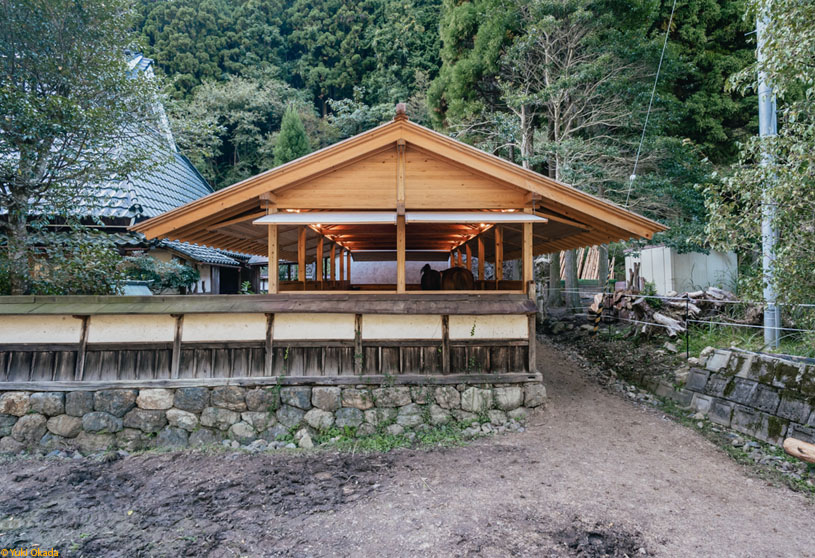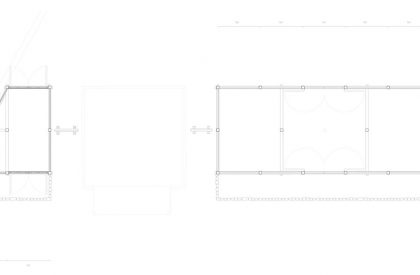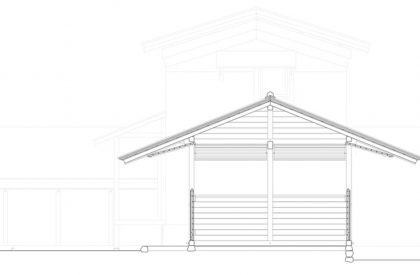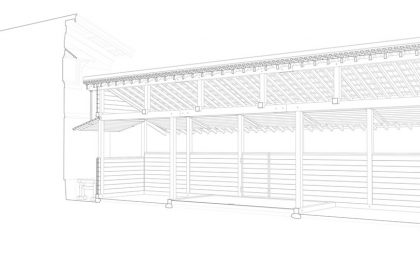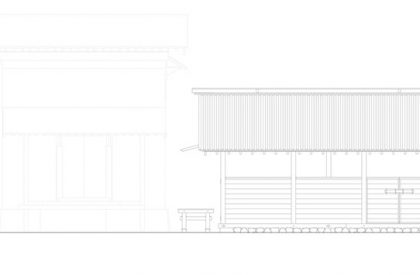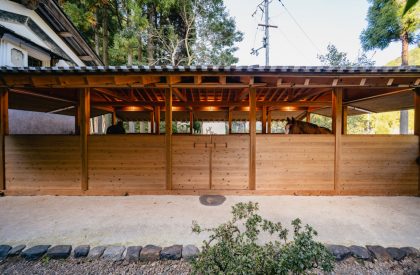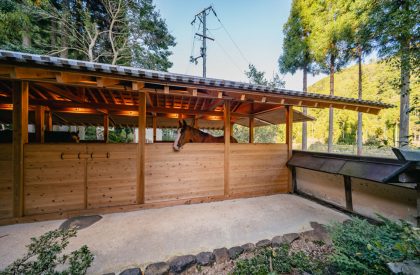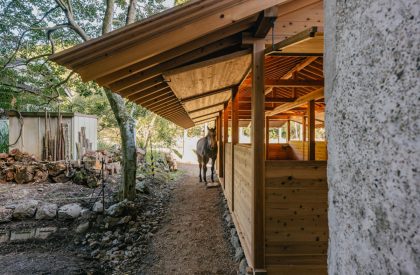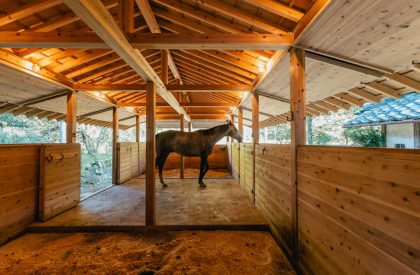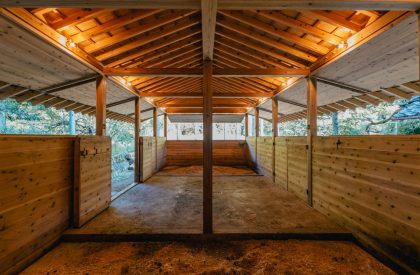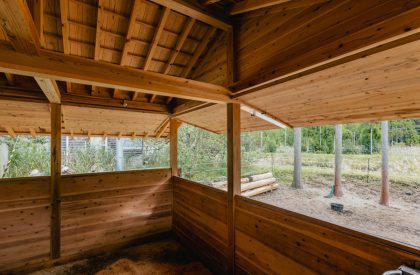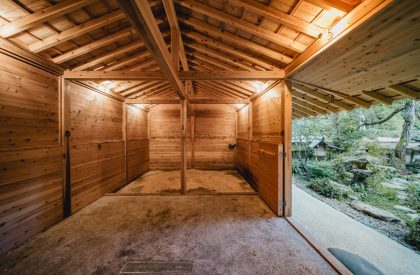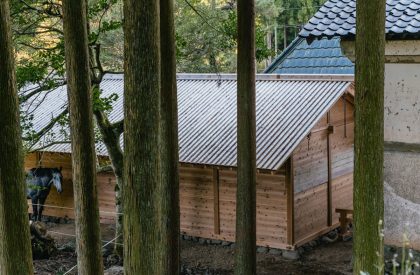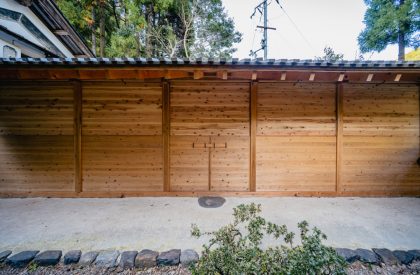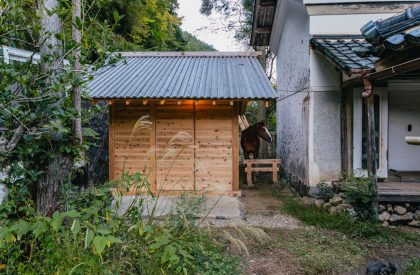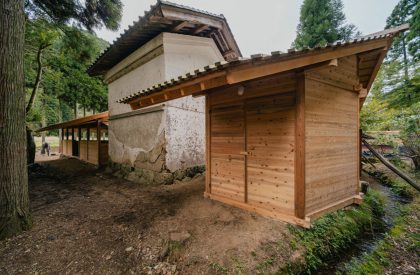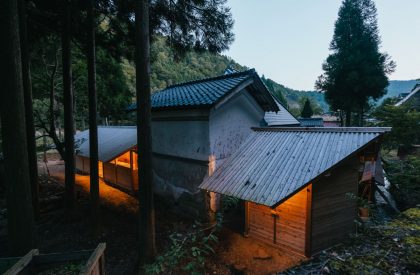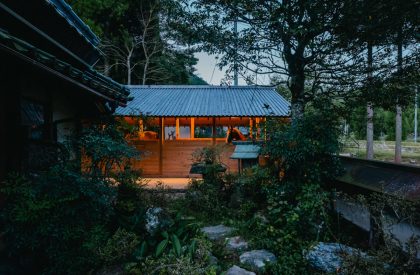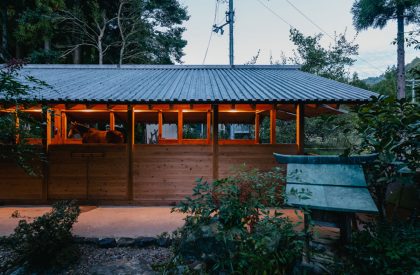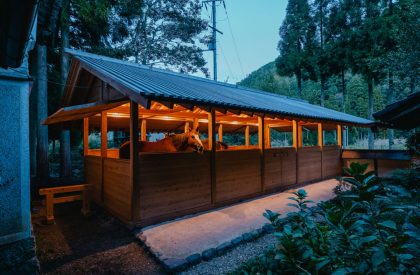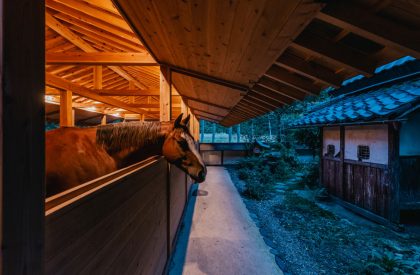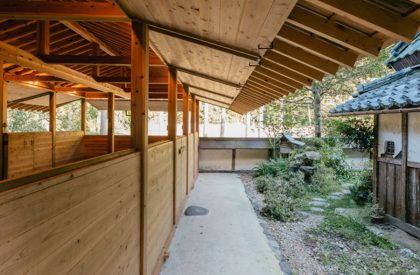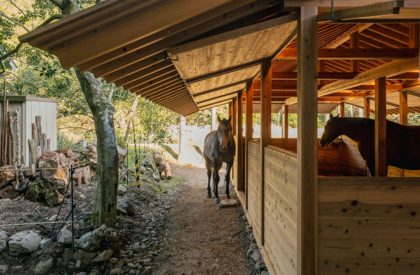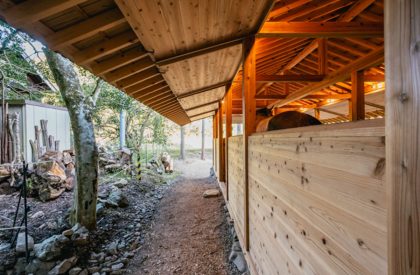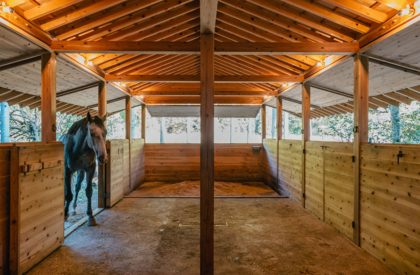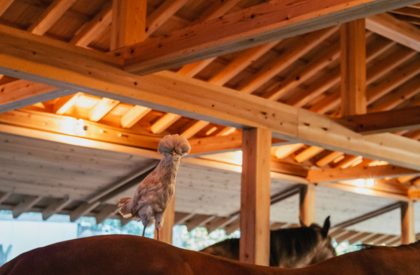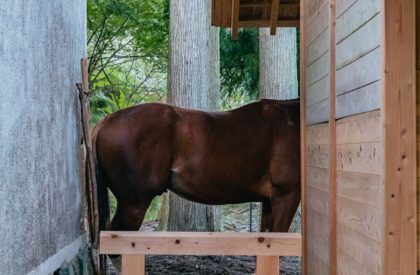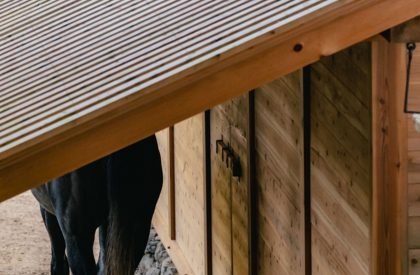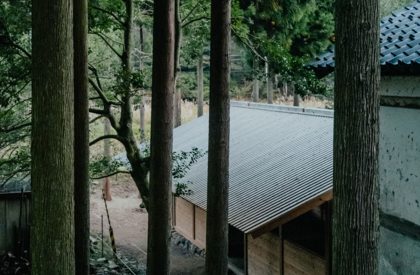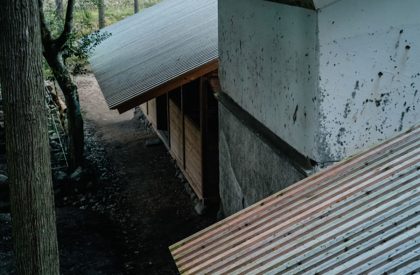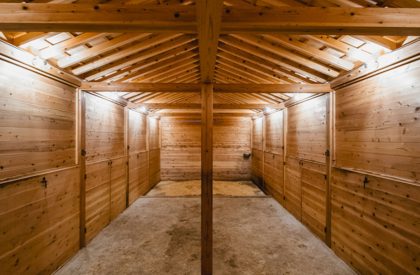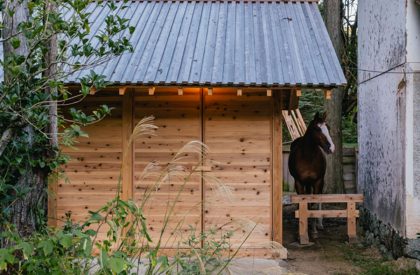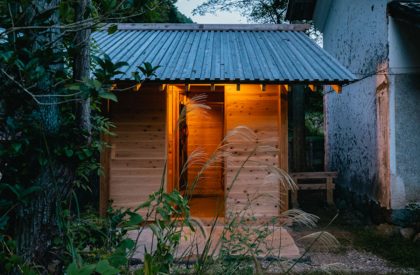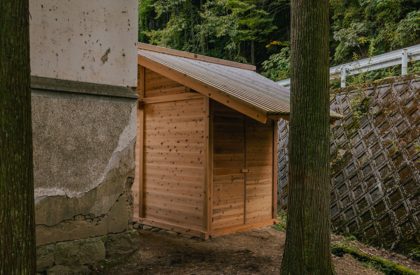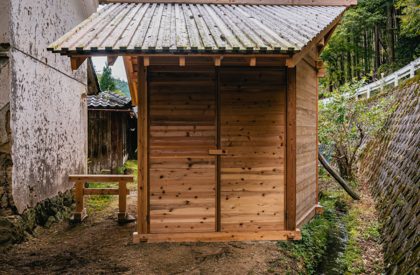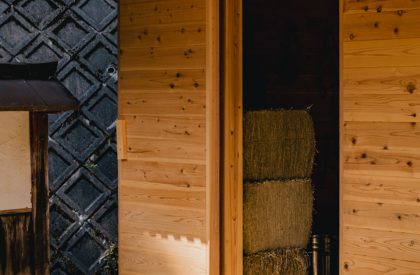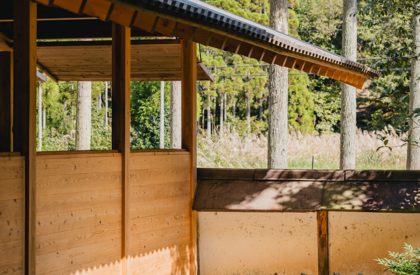Excerpt: Umagoya, designed by Kyoto-based architecture studio 2m26, is a stable, made of cypress following traditional Japanese joineries, for 2 horses located in Keihoku, north mountain side of Kyoto city. The building takes part in a traditional enclosing system of an old Japanese folk house. Umagoya is a house for horses, an vernacular architecture next to 200 years old thatched Japanese farm.
Project Description
[Text as submitted by architect] A stable entirely made of cypress following traditional Japanese joineries. Designed and built by Kyoto-based architecture studio 2m26, Umagoya is stable for 2 horses located in Keihoku, north mountain side of Kyoto city.


The building takes part in a traditional enclosing system of an old Japanese folk house. Around the main thatched roof building, a few outbuildings and a garden surrounded by soil walls enclose the site. The Umagoya embrace a Kura ( storage made by thick soil wall), with stability on one side and saddlery and food storage on the other side.
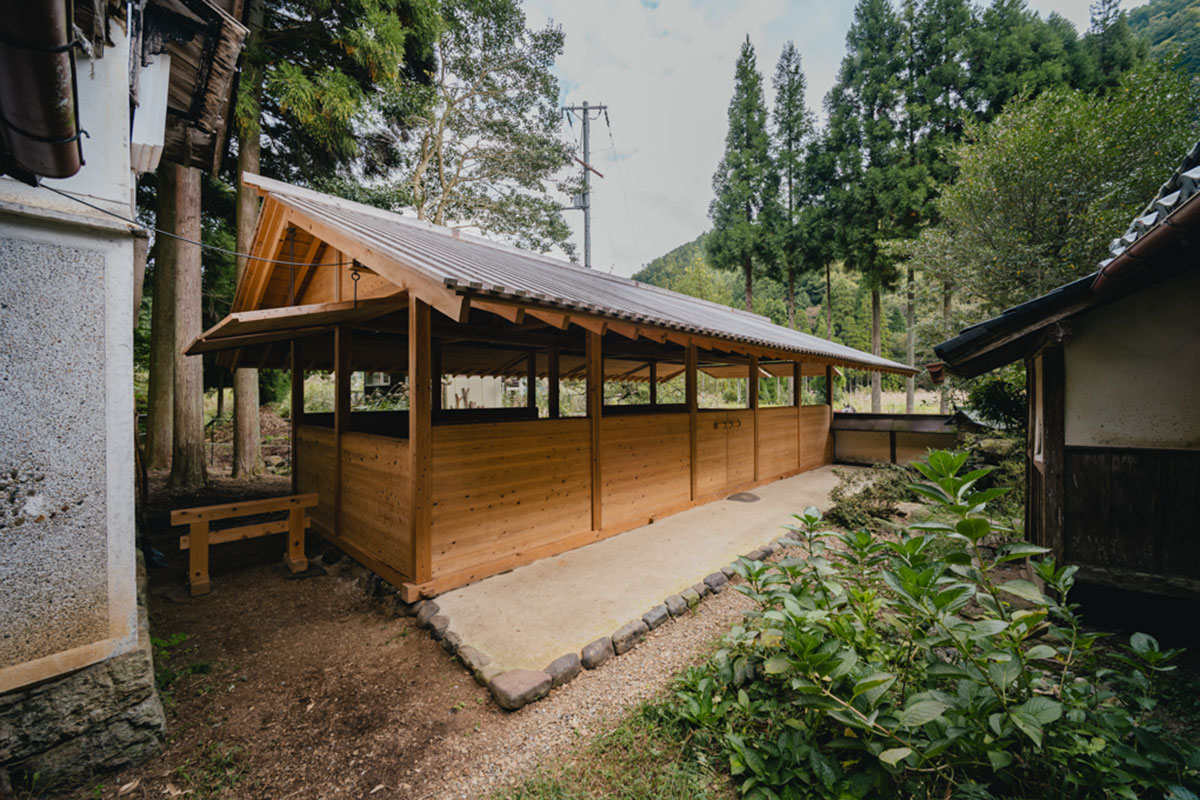
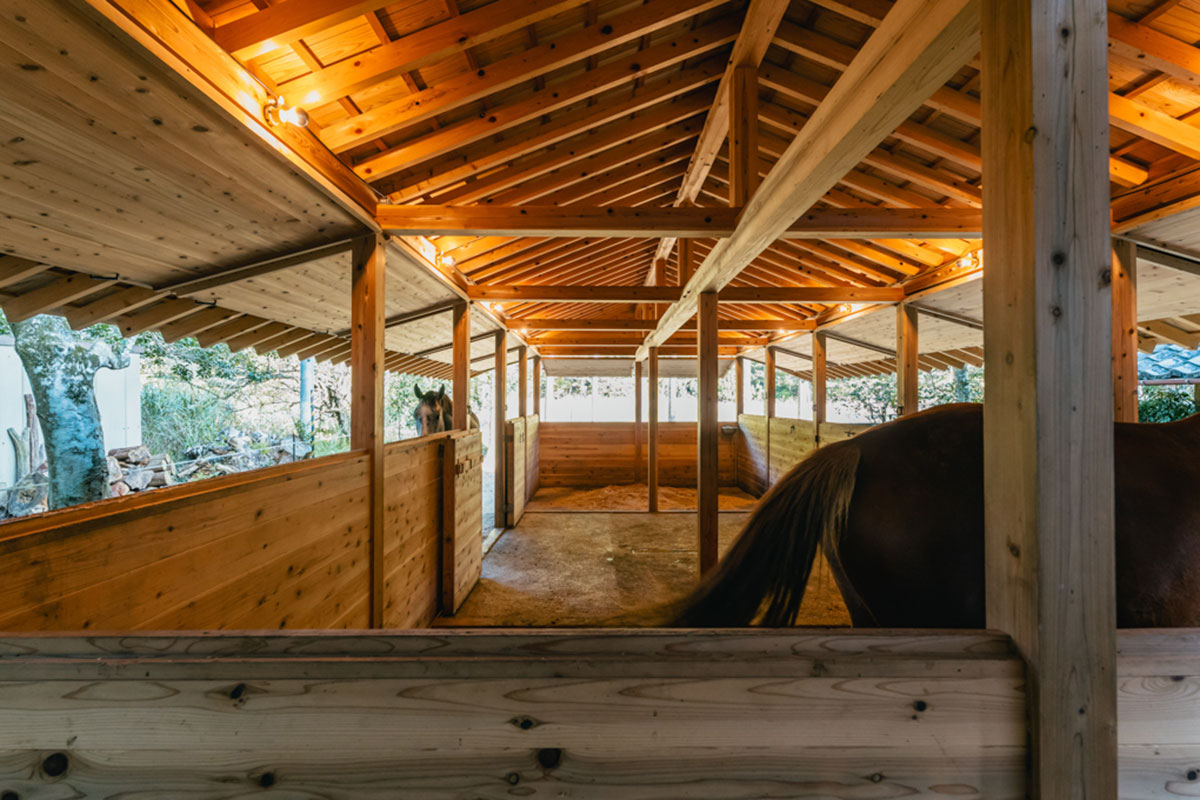
The construction was exclusively assembled by Japanese traditional joinery in order to respect the soul of adjacent buildings.
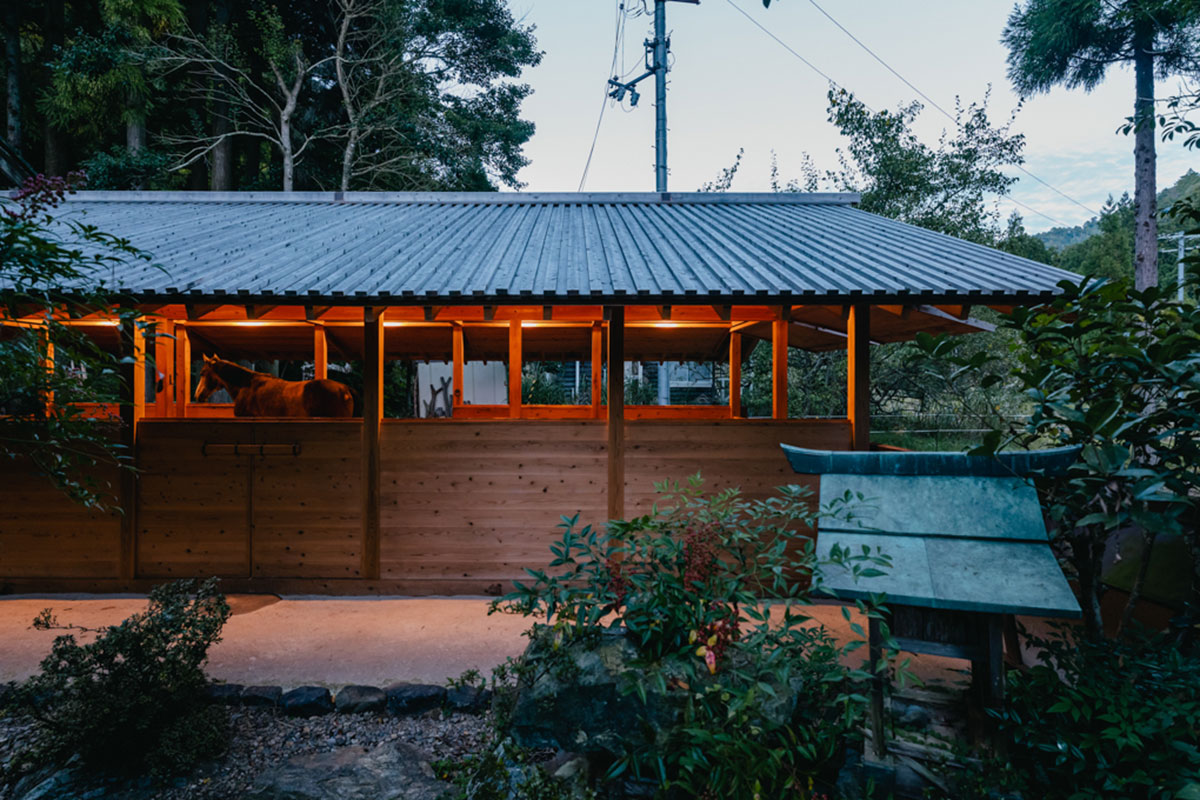
On a handmade stone basement, the whole structure is made of locally sourced cypress wood, including the roof itself which is composed of three layers of hinoki cypress boards. This method permits a reduction of environmental impact and leftovers.

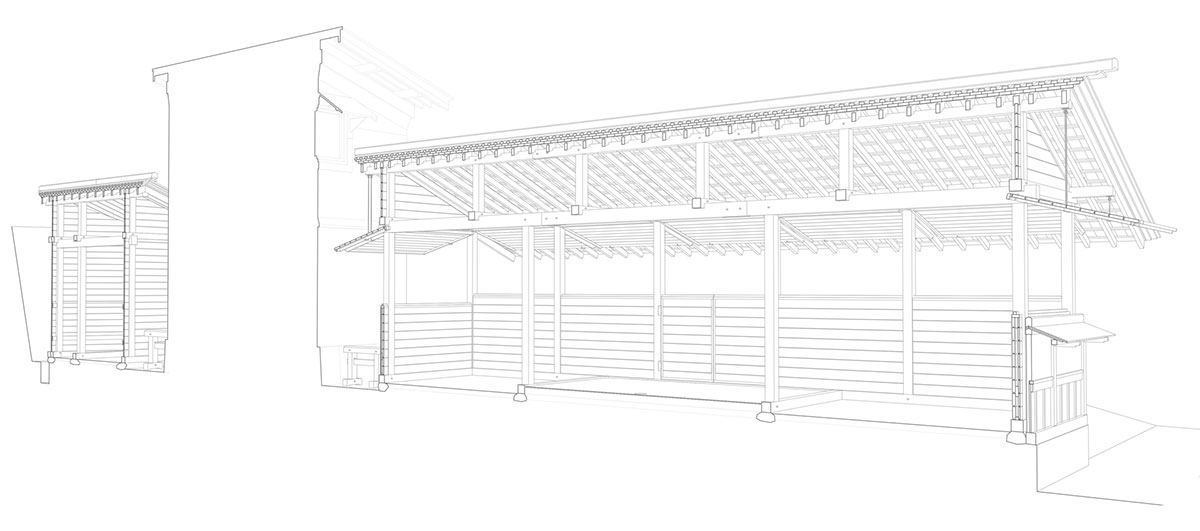
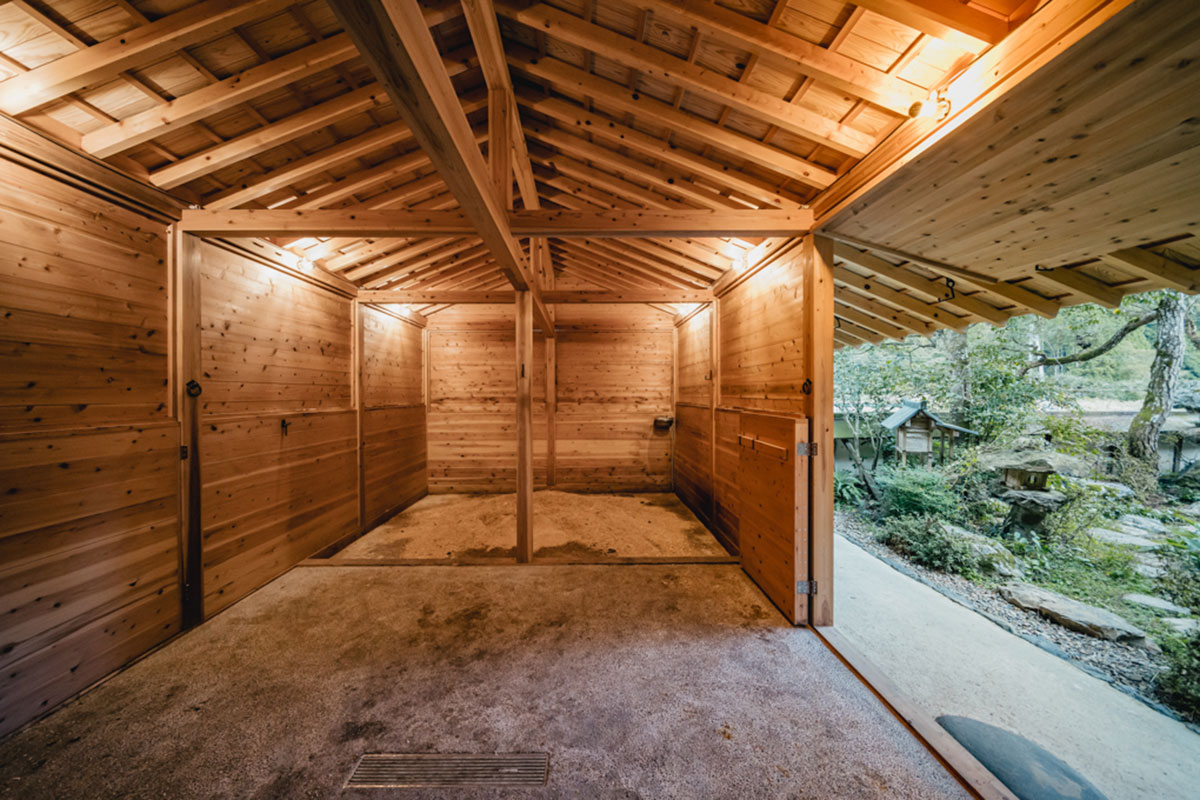
Followings this energy-saving methodology, flooring is made in compressed soil and lime mix as a traditional Japanese Tataki. The central area is designed to offer space to prepare horses for a ride and take a shower, and another traditional method is used here: araidashi, small stones and cement mixed and washed before get dry.

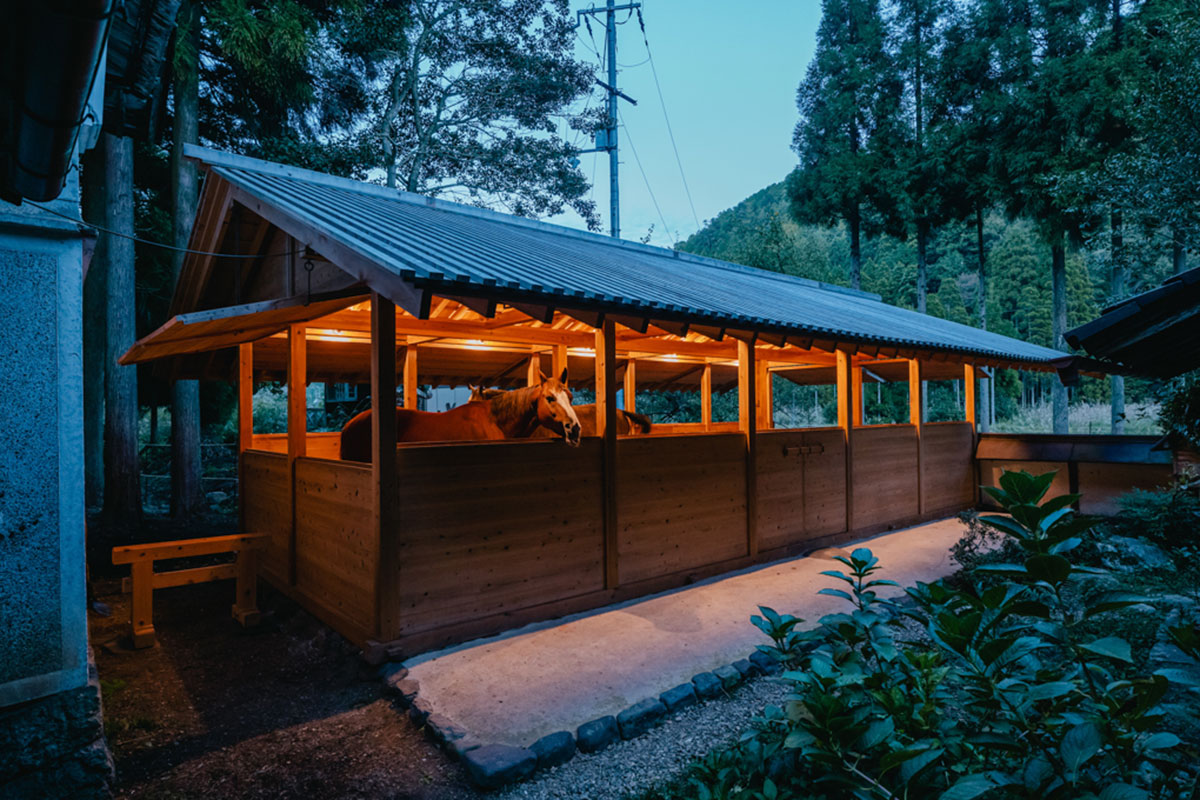
To offer confort during heavy snow and typhoon, wood shelters inspired by temple “shitomido” can be lifted on four sides. To open, the top panels are suspended by L-shaped metal hinges. All metal hardware was designed by the studio and crafted by a traditional Japanese blacksmith.
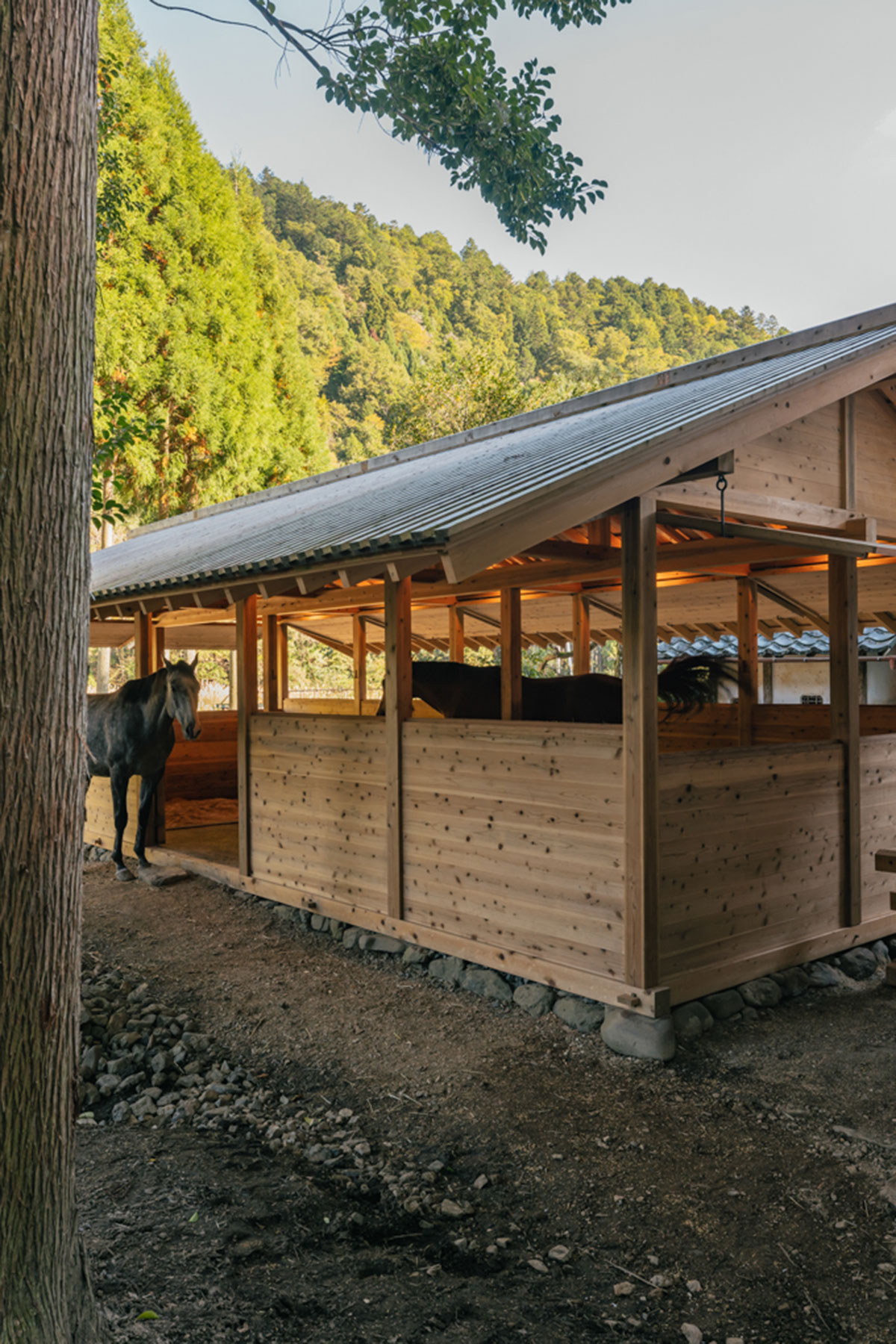
Umagoya is a house for horses, an vernacular architecture next to 200 years old thatched Japanese farm.
